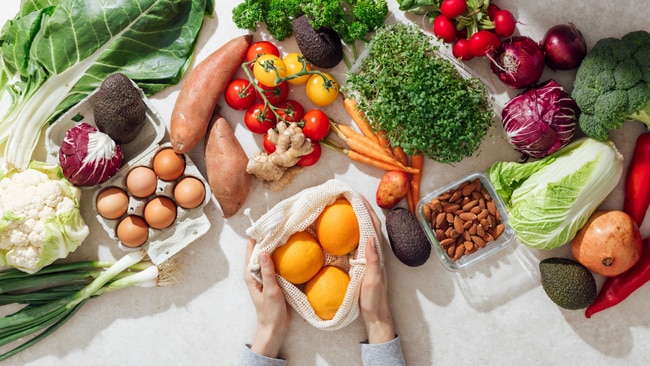How to deal with food cravings when you're trying to eat healthier
Diet resentment is real
Lifestyle
Don't miss out on the headlines from Lifestyle. Followed categories will be added to My News.
While cutting down on chocolate and sidestepping takeaway is relatively simple initially, many of us will likely fall off the bandwagon. According to dietitian Susie Burrell, there are a few key questions we should ask ourselves before we reach for the chips.
When embarking on a healthy lifestyle regimen, it can be common to experience a little diet resentment – annoyance that you have to say no to foods you would usually eat; or drink less than you usually would, and like resentment in any area of our lives, it can build up, inevitably leading to binge eating at some point as you defy your self-imposed food limitations and restrictions.
While there does need to be a level of acceptance that the majority of people can’t just eat whatever they like, when they like, and not gain weight, ultimately the key to creating a sustainable lifestyle-friendly eating plan is to ensure it includes foods you like so you do not feel restricted.
While this may mean you cannot demolish a block of chocolate or an entire pizza like you may have done previously, whether you enjoy a sweet treat after dinner, a glass of wine at night or eat out each week and order whatever you like, these individual higher calorie meals or foods can all be included in a plan that supports fat loss and weight control.
Like what you see? Sign up to our bodyandsoul.com.au newsletter for more stories like this.
Generally speaking, adding in an extra 100-200 calories per day for a ‘treat’ or higher calorie food, or factoring in a higher calorie meal or two will not undo all your hard work, nor will it undermine your weight loss efforts. Rather, it is when we overdo things by eating four chocolate biscuits instead of one, or ordering pizza plus garlic bread plus dessert plus wine that undoes your efforts.
While including these higher-calorie foods or meals in your regular eating plan may feel a little daunting, the key to success is really taking time to consider what you feel like eating.
In many cases when we are cognitively restricting our food intake, we reach for more indulgent foods without even thinking if we feel like eating that food, rather feeling that we should be allowed to eat whatever we like.
Reframing this, and instead taking the time to really consider which foods we enjoy eating the most, and how we are best to use our calories each day is another key step in being able to control your food intake no matter what tempting foods are around you.

As you consider how more indulgent foods may fit into your life moving forward, here are some simple questions to ask from a general perspective, but also in situations in which you know there is an opportunity to overeat that will help to keep you in control of your food intake:
- Is this a special occasion, or just a regular day in which cake is being served?
- What do I really feel like eating right now?
- Is this food worth the calories?
- I am craving something, what flavour, taste and texture will give me the satisfaction I am looking for?
- What foods do I enjoy eating the most?
- How can I enjoy some of the higher-calorie offerings, but still create a balanced meal?
- Am I best to enjoy a small treat each day, or a larger more indulgent meal a couple of times each week?
Here you can start to be more discerning with your food choices and decide where you really want to use your calories. Over time you will learn to differentiate day-to-day balanced eating versus special occasion meals in which indulgence is expected.
The 30-Day Reset Plan by Susie Burrell is out now.
More Coverage
Originally published as How to deal with food cravings when you're trying to eat healthier





